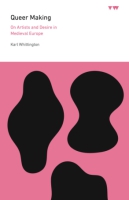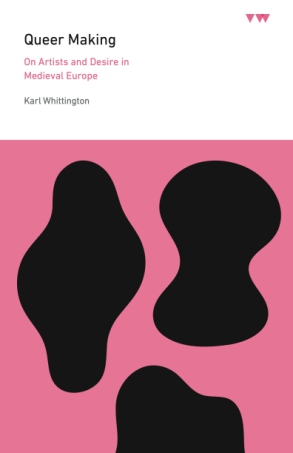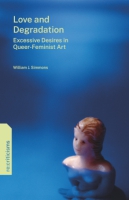Queer Making
On Artists and Desire in Medieval Europe
Karl Whittington
“This provocative and pioneering book sets out to explore the capacity of artistic making to engender queer experiences and desires. While to date scholarship on queerness in medieval art has mainly been taken up with issues of identity and iconography, Whittington shifts our attention to materials and techniques, seeing these as being themselves sites of physical intimacy, desire, and (homo)eroticism.”
- Description
- Reviews
- Bio
- Table of Contents
- Sample Chapters
- Subjects
We know little about the identities and personalities of most premodern artists, but this should not hold us back from thinking about their embodied experience. In this book, Karl Whittington contends that we can “queer” the works of anonymous makers by thinking about their embodied experiences creating art. Considering issues of touch, pressure, and gesture across substances such as wood, stone, ivory, wax, cloth, paint, and metal, Whittington argues for an erotics of artisanal labor, in which the actions of hand, body, and breath interact in intimate ways with materials. Whittington takes seriously the agency of materials and technical processes, arguing that they necessarily placed the bodies of artists and artisans into physical situations and psychological states that can be read through the lens of desire.
Combining historical evidence with speculative description, this evocative set of essays broadens our understanding of the motivations and experiences of premodern artists. It will appeal to scholars and students of art history, medieval studies, gender studies, queer studies, and anthropology.
“This provocative and pioneering book sets out to explore the capacity of artistic making to engender queer experiences and desires. While to date scholarship on queerness in medieval art has mainly been taken up with issues of identity and iconography, Whittington shifts our attention to materials and techniques, seeing these as being themselves sites of physical intimacy, desire, and (homo)eroticism.”
“In this speculative, creative, and evocative work, Whittington brings together queer studies and materiality studies to explore the feelings of desire a maker may have experienced while creating material things. By vividly imagining scenarios of creation that put artists into close contact with their materials and the bodies they formed, Whittington creates a vivid picture of medieval artists as human beings who had physical and emotional intimacy with their creations.”
Karl Whittington is Professor of History of Art at The Ohio State University. He is the author of Body-Worlds: Opicinus de Canistris and the Medieval Cartographic Imagination and Trecento Pictoriality: Diagrammatic Painting in Late Medieval Italy.
List of Illustrations
Acknowledgments
Introduction: Queer Pygmalions
1. Stone and the Sculptor’s Touch
2. Holding Hands in Wood
3. Warming the Ivory Martyrs
4. Handling Wax
5. The Painter’s Breath and Brush
6. Sainte Foy and the Pleasure of Submission
7. Fittings
Conclusion: Maintenance
Notes
Bibliography
Index
Download a PDF sample chapter here: Introduction
Also of Interest
Mailing List
Subscribe to our mailing list and be notified about new titles, journals and catalogs.






